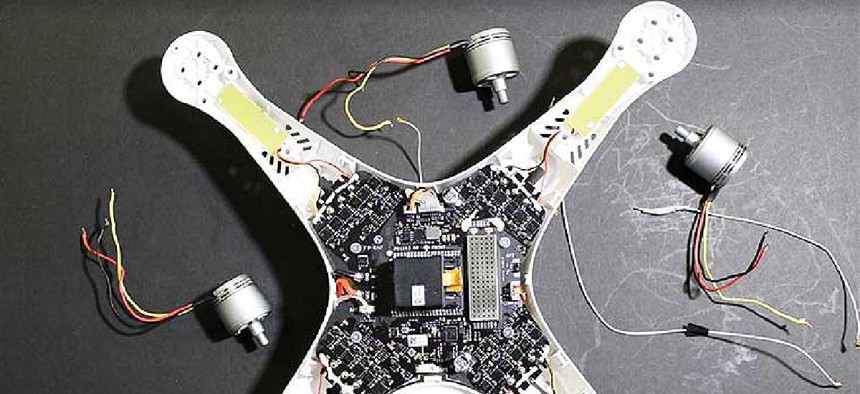Coast Guard plans drone intercept program

The U.S. Coast Guard is developing a counter-drone capability to protect both its own locations and to guard protected assets under special circumstances as provided for under a recent law.

The U.S. Coast Guard is developing a counter-drone capability to both protect its own locations and to guard protected assets under special circumstances as provided for under a recent law.
Under the Preventing Emerging Threats Act, which was signed into law last year, Department of Homeland Security components including the USCG are authorized and directed to mitigate threats posed by unauthorized unmanned aerial systems to facilities and to what are deemed National Security Special Events – things like the Super Bowl or a presidential visit. DHS components also can provide counter-drone capabilities at the request of state, local and tribal law enforcement requests or to preserve active crime scenes and in other emergency conditions.
The Coast Guard's year-long pilot program, which was announced via an Oct. 28 privacy impact assessment, is designed to develop processes and procedures for deploying anti-drone capability.
Aspects of the pilot include deploying radar and photographic tools to detect, identify, track and -- when necessary -- "seize control of airborne contacts" that pose a potential threat. Per the privacy notice, the pilot project isn't designed around collecting personally identifiable information. The systems used in the pilot are not intended to capture images from a drone under observation in real-time, according to the privacy notice.
USCG plans to make efforts to identify and communicate with operators of potentially threatening drones in advance of any efforts to "disrupt or disable." If USCG personnel "are not able to resolve the threat through personal contact," the document states, they "may use C-UAS technology to mitigate the threat consistent with that authorized by the Act."
The document also states that any images of individuals captured by the powerful telescopic Electro-Optical/Infra-Red camera systems on won't be stored by the USCG.
NEXT STORY: A Plan to Engage Hackers in Election Security






